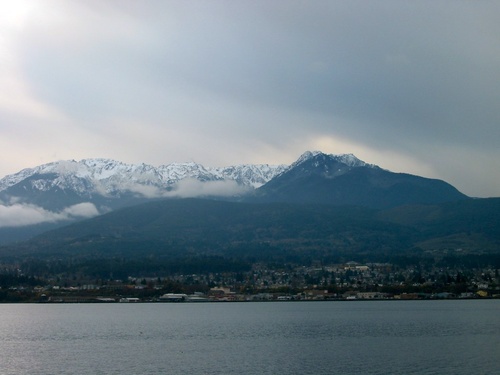 Originally posted by Paul Cooper on Flickr
Originally posted by Paul Cooper on Flickr
 Originally posted by Valley Photography 253 on the Ediz Hook Facebook page
Originally posted by Valley Photography 253 on the Ediz Hook Facebook page
Ediz Hook Overview
Ediz Hook is a long, thin peninsula that juts out from the Port Angeles Harbor; currently home to a United States Coast Guard station and many stray and feral cats. The vast open view of the hook showcases the blue and green colors of the Olympic Mountains and also gives a faint view of Canada from across the water. Many tourists enjoy traveling along Ediz Hook since views of the Olympic Mountains and glassy waters of the Pacific Ocean provide a beautiful landscape. Other than the group of stray community cats that roam the area, you are more than likely to find seals and peeks of orcas in the distance. Additionally, there is an abundance of different types of birds and efforts to maintain the variety of species. If you look closely around the rocks, you will find pieces of vibrant sea glass and marbles. At the very end of Ediz Hook there is a U.S. Coast Guard Station responsible for search and rescue, homeland security, and environmental maintenance.
If you'd like to see more of Ediz Hook and Port Angeles, there is an unofficial Facebook group page that features more photos of the sand spit -> https://www.facebook.com/pages/Ediz-Hook/144107668937729
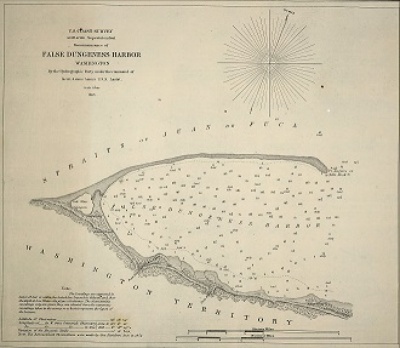 Originally posted on jamestowntribe.org
Originally posted on jamestowntribe.org
Ediz Hook's History
Ediz Hook was once home to one of many of the native tribes in the area before Europeans settled in during the 1800's and 1900’s, TheWashington State Department of Archeology and Historic Preservation describes two Klallam (some natives in the area prefer the spelling “S’Klallam”) villages, grouped together by “language and kinship” that had lived in the nearby area. The one that lived primarily at the base of Ediz Hook was the Čḯxwicən village (alternatively named Tse-Whit-Zen), which radiocarbon dating suggests their existence as early as 750 B.C. (Or around the time Rome, Italy was founded) as discovered during the recent excavation of the area.
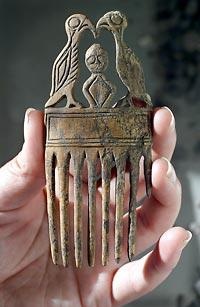 Photo taken from The Seattle Times
Photo taken from The Seattle Times
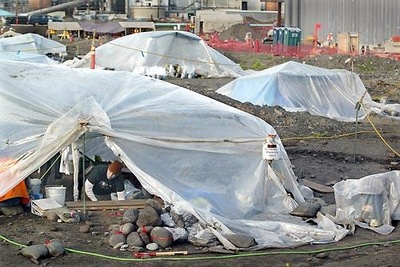 Originally posted by Steve Ringman for The Seattle Times
Originally posted by Steve Ringman for The Seattle Times
In 2004, a state project to repair the Hood Canal Bridge began, using the Ediz Hook to create parts for the bridge, despite extensive historical documents detailing the tribe's historical past in the area and the descendants of the tribe expressing opposition. When unearthing the large amounts of landfill from the construction of a previous mill, construction workers found the remnants of the village and a supposed burial site. Once uncovering the human remains and other various objects of the previous Tse-Whit-Zen people under the surface of the ground, all construction had halted as the state and the tribal members agreed what to do with the remains and artifacts. Eventually, it was decided the entire construction project was to stop permanently and a thorough excavation was to proceed with the intention to rebury the remains and preserve any artifacts. With archaeologists under the discretion of the current tribal members at the front of the new project, the remains of their ancestors were removed and relocated in preparation for reburial. Sadly, not all of the remains were exhumed, as the project was much larger than initially anticipated and funds had run out quickly. This bore heavy emotional weight on the Klallam people, knowing some of their ancestors still lay under landfill within Ediz Hook. It was a painful reminder of their ancestor’s treatment from the new European settlers; both in carrying illnesses previously unknown to the natives and in the forceful way they had been driven out of their homes and away from their deceased loved ones. With over 300 sets of human remains found, it was theorized that there had been a time period of a large amount of deaths - presumably from smallpox, an illness unbeknownst to the natives prior to the European settlers.
The Tse-Whit-Zen, like the many other native villages of the area, fought to keep their homes despite not being “recognized” and their practices being made “illegal” by the new U.S. government. Still, by the 1930’s, there were over 30 families living at the base of the hook, resistant to leave. The descendants of the Tse-Whit-Zen currently reside within the Jamestown S’Klallam tribe and the Lower Elwha Klallam tribe.
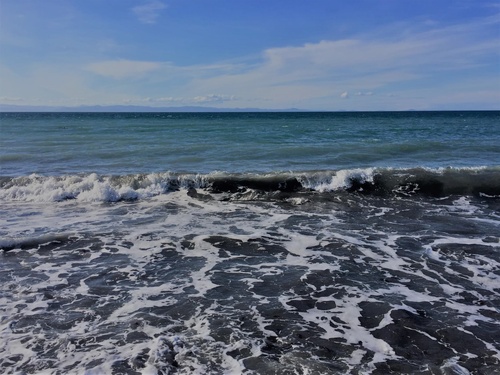 Image provided by user Jayceedtp
Image provided by user Jayceedtp


